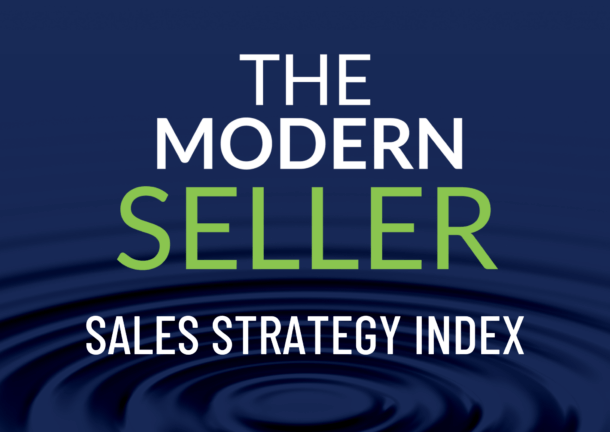There’s a critical connection between a sales leader’s strength and the collective performance of their sales team. Every sales professional plays a pivotal role in determining overall success. This article provides sales strategies for sales leaders, with insights into current sales trends, essential leadership qualities, and common leadership pitfalls to steer sales teams toward remarkable growth.
*****
A sales leader is only as strong as the collective sales team. Every sales professional either contributes to or deducts from the overall success of your team, your clients, and your organization. This article offers trends impacting sales growth, crucial leadership capabilities, and leadership mistakes to avoid.
Current Trends Impacting Sales Growth and Leadership
The sales landscape has changed significantly in recent years, and successful sales leaders can leverage these changes to build a high-performance team. Below are several trends to consider:
1. Missed forecasts in the face of disruption. Researched conducted by HubSpot found that of over 500 sales leaders surveyed, 40% missed their annual sales targets. Continued supply chain and personnel challenges will place pressure on sales leaders to meet their sales targets.
2. Remote and hybrid workforces have become the norm. As more sales professionals are working in remote environments, sales leaders are needing to find new ways to engage, coach, and hold teams accountable for results.
3. Access to decision makers has shifted. With so much movement in and out of organizations, your decision makers have changed; additionally, access to them for sales conversations has required new approaches.
4. Many transactional sellers require a skill upgrade to consultative selling. While there is still a need for transactional selling in some business segments, most of today’s sellers are in complex sales scenarios. Their skills are required to be more consultative and value focused.
5. There is a blending of in-person and digital executive presence. Leaders are needing to skill their teams in digital and in-person environments. A sales professional’s presence has an increased spotlight in a variety of environments, both internal and external.
6. Sales skills have declined over the past three years. With inflation, ongoing supply chain disruptions, remote work, or personnel movement within your organization, it’s likely your teams’ overall skills have declined. Many sales organizations are experiencing false growth through price increases and not by adding new customers or expanding existing customers.
Today’s Most Important Sales Leadership Capabilities
Sales leaders find themselves needing to flow seamlessly between the management aspects of their role and the leadership aspects of their role. Sales leadership elements include activities like shaping strategy, creating a productive and performance-oriented environment, helping individual team members develop their sales plans, identifying new markets and clients, and talent scouting. Management tasks are items like reporting, tracking activities, reviewing sales data, reviewing compensation, and participating in tactical problem solving.
Often, the scales tip toward management tasks because they’re usually the burning issue of the moment. Leadership tasks are longer term and often take more creativity and collaboration.
What makes for a truly effective leader today?
1. Creating a vision. Modern sales leaders envision, build, and scale a successful sales team or organization. They are always thinking of the big picture, and they can see beyond the ambiguity and disruption that the organization, industry, or world is experiencing.
2. Navigation. This includes helping professionals to manage internal obstacles, assisting with smoothing customer challenges, and helping teams to remain focused on key sales activities. Navigation also includes managing direct reports while managing upward, laterally, and outside of the organization.
3. Creating a productive sales growth culture. Sales leaders either actively define their sales culture, or it is defined for them. Sales growth culture is your unique combination of factors that help you to create sustainable, meaningful, profitable growth. We don’t want to just create a short-term result. We want to create long-term results that propel the organization forward for years to come.
4. Practicing self-leadership. It’s hard to lead others without first investing in yourself. Smart and impactful leaders lead by example by taking a vested interest in their own development and striving for consistent improvement in their personal and professional acumen.
Investing in your sales team’s growth is the key to unlocking unparalleled success for your clients and organization.
Common Sales Leadership Mistakes to Avoid
I often advise sales leaders and growth officers in their strategic, people, and operational efforts. There are some common sales leadership mistakes that stall long-term growth and performance.
1. The wrong approach with metrics. This may be too many metrics or not the right metrics. Consider a “metrics audit” to determine what is most meaningful to track based on organizational goals. If you can prioritize your top five focus metrics, you’ll find far greater success than having too many metrics. You may find that depending on the individual team member’s goals you may want to tailor metrics.
2. Lack of quality data. In large companies this can take the form of data in disparate places that becomes hard to track and use. In smaller companies this often presents as having no centralized data platform with which to track customers, deals, and revenue. When sales data isn’t reliable or accessible, it leads to a lack of trust. As a sales leader, leverage your influence to ensure your organization has a reliable customer relationship management (CRM) system and that the data is accurate and used to make decisions.
3. Lack of sales processes. Processes are the foundational structure of the sales organization, and they impact many elements of sales growth. Sales process examples include customer buying journeys, sales methodology, skill development, data integrity, onboarding, offboarding, compensation, hiring, and sales plans. The lack of sales processes is a red flag to top performers who interview with your organization. It will be interpreted as a lack of maturity; the risk is that you’ll lose current and potential sales professionals.
4. Poor hiring and firing. Poor hiring and firing might be the top reason for culture and performance problems on a sales team. There’s a difference between a short-term issue that causes poor performance and chronic underperformance. Too many leaders tolerate poor performance for extended periods of time. Or the individual hired isn’t a fit for the role. Either situation ultimately leads to long-term morale issues and lack of results.
5. Leaders who don’t learn to coach. Strong sales leaders should be strong coaches, but most sales leaders aren’t taught how to coach or lead. It is either assumed they know how, or coaching isn’t a formal part of the organizational culture. If you are one of those sales leaders struggling to coach, you may find it helpful to enroll in a coaching program to learn those skills or shadow leaders who are successful coaches.
6. Leaders not investing in themselves. Your self-development is one of the best investments you can make, and many sales leaders put themselves last. I’d like to offer a different perspective, and that’s to put yourself first. Prioritizing your care and development will make you a leader who is better able to serve your team and your customers. Too many leaders suffer from burnout, which has the exact opposite effect on results and overall impact.
I can help you build a strong sales team!
Don’t let your competition get an advantage. I can help. If you want to know how to develop strong sales leaders that positively impact results, let’s talk. Contact me to schedule time for a discovery conversation.



 Our Strategic Selling signature sales training program is now available online. This online sales learning program is ideal for professional services and B2B sales. Get started with 2 free lessons.
Our Strategic Selling signature sales training program is now available online. This online sales learning program is ideal for professional services and B2B sales. Get started with 2 free lessons.